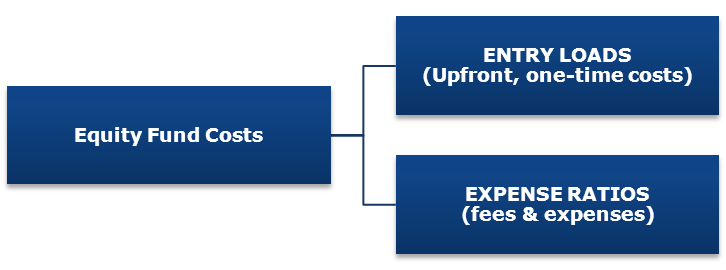Category: International Finance Sub-category: International Finance
Document type: news
According to a study of The Financial Express, the cost of owning equity mutual funds in India is costlier than that in the United States (US). This is because of the expense ratios charged in India.

The entry loads, which are upfront one-time costs, were banned by SEBI since August 2009, putting Indian investors in a relatively better position. In the US, the maximum entry load charged on the US equity funds was 5.3%. However, the average entry load fee is around 1% because of load fee discounts on large purchases and fee waivers given by brokers.
The expense ratios are the fee charged by the mutual fund company for managing the investor's money. It is deducted or amortized every business day from the net asset value (NAV) of the mutual fund. The expense ratio is around 2.04 % per annum in India - double that of US equity funds. Therefore, there is a wider overall cost difference for the US and Indian investors over time as the expenses are charged throughout the investment's holding period. Usually, the expense ratio in the US falls with increase in assets.
For example, a Rs. 1 lakh investment in equity funds (earning 16% every year) for a 5 year and at the current going rates, will yield Rs 2,00,426 to the US investors as against Rs. 1,92,541 to Indian investors.
According to the Washington-based Investment Company Institute, an MF tracker, the average expense ratio of US equity funds often varies inversely with fund assets. This is due to the fact that certain fund costs such as transfer agency fees, accounting and audit fees and director's fees are more or less fixed in dollar terms and these costs become smaller relative to assets as fund assets rise and vice-versa.
The expense ratio of US equity funds fell from 1.56% per annum in 1995 to 0.95% in 2010. In India, the expense ratio has been constant at 2% per annum since 1993.
| Value | Charged Expense Ratio |
| First Rs. 100 crore of assets | 2.5% per annum |
| Next Rs. 300 crore of assets | 2.25% per annum |
| Next Rs. 300 crore of assets | 2.00% per annum |
| Next Rs. 300 crore of assets | 1.75% per annum |
According to an Asset Management Company in India, the reason behind the high fees charged is that most money in the US comes through index funds and their distribution cost is much lower than in India. Apart from these, there are many funds in the US which have higher variable exit loads upto 5 years, while in India, generally, there are no exit loads after a year of investment.
-









